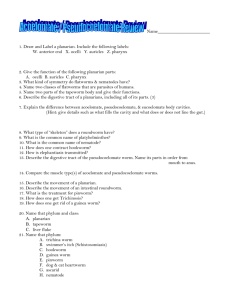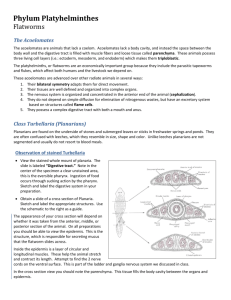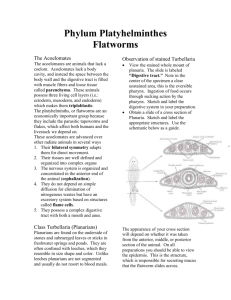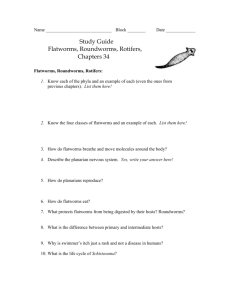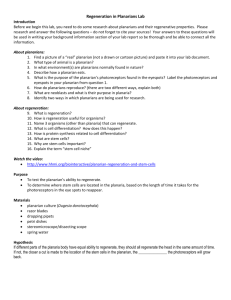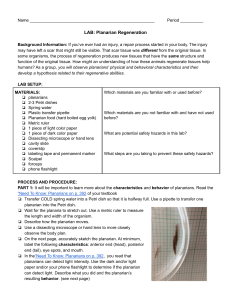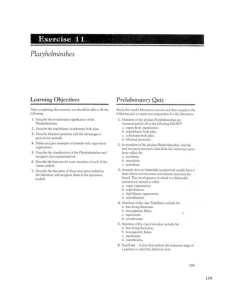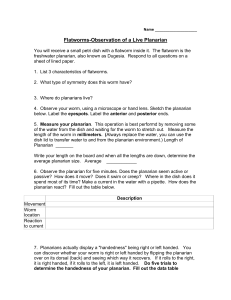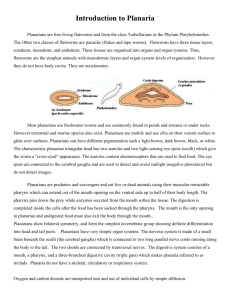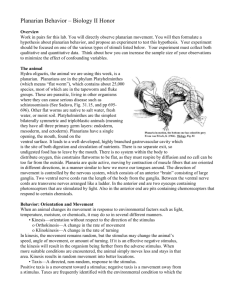Life Science
advertisement
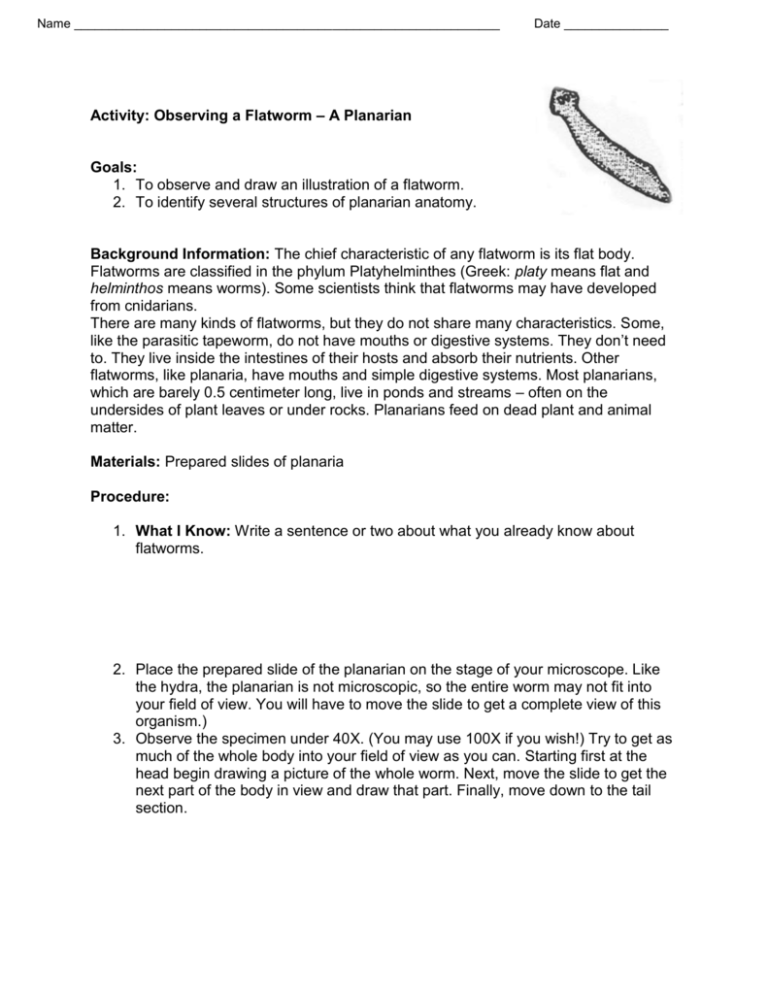
Name _____________________________________________________________ Date _______________ Activity: Observing a Flatworm – A Planarian Goals: 1. To observe and draw an illustration of a flatworm. 2. To identify several structures of planarian anatomy. Background Information: The chief characteristic of any flatworm is its flat body. Flatworms are classified in the phylum Platyhelminthes (Greek: platy means flat and helminthos means worms). Some scientists think that flatworms may have developed from cnidarians. There are many kinds of flatworms, but they do not share many characteristics. Some, like the parasitic tapeworm, do not have mouths or digestive systems. They don’t need to. They live inside the intestines of their hosts and absorb their nutrients. Other flatworms, like planaria, have mouths and simple digestive systems. Most planarians, which are barely 0.5 centimeter long, live in ponds and streams – often on the undersides of plant leaves or under rocks. Planarians feed on dead plant and animal matter. Materials: Prepared slides of planaria Procedure: 1. What I Know: Write a sentence or two about what you already know about flatworms. 2. Place the prepared slide of the planarian on the stage of your microscope. Like the hydra, the planarian is not microscopic, so the entire worm may not fit into your field of view. You will have to move the slide to get a complete view of this organism.) 3. Observe the specimen under 40X. (You may use 100X if you wish!) Try to get as much of the whole body into your field of view as you can. Starting first at the head begin drawing a picture of the whole worm. Next, move the slide to get the next part of the body in view and draw that part. Finally, move down to the tail section. 4. What I Observed: Draw the planarian and label the head, an eye spot, mouth tube, digestive tract, and the tail. Caption your drawing. Illustration of a Planarian Caption: 5. Questions: Answer the following questions in complete statements. a. Describe the general shape of the body of the planarian. b. Describe the location of the mouth. c. Although they cannot see images with their eyespots, planarian can detect light from dark. 1. Describe the eyespots. 2. Why are these eyespots important to their survival? d. The planarian has a mouth but no anus. How do you think it gets rid of its wastes? (Hint: This might be a reason why some scientists think that flatworms evolved from cnidarians. e. How is having a distinct head end an advantage to a planarian?


